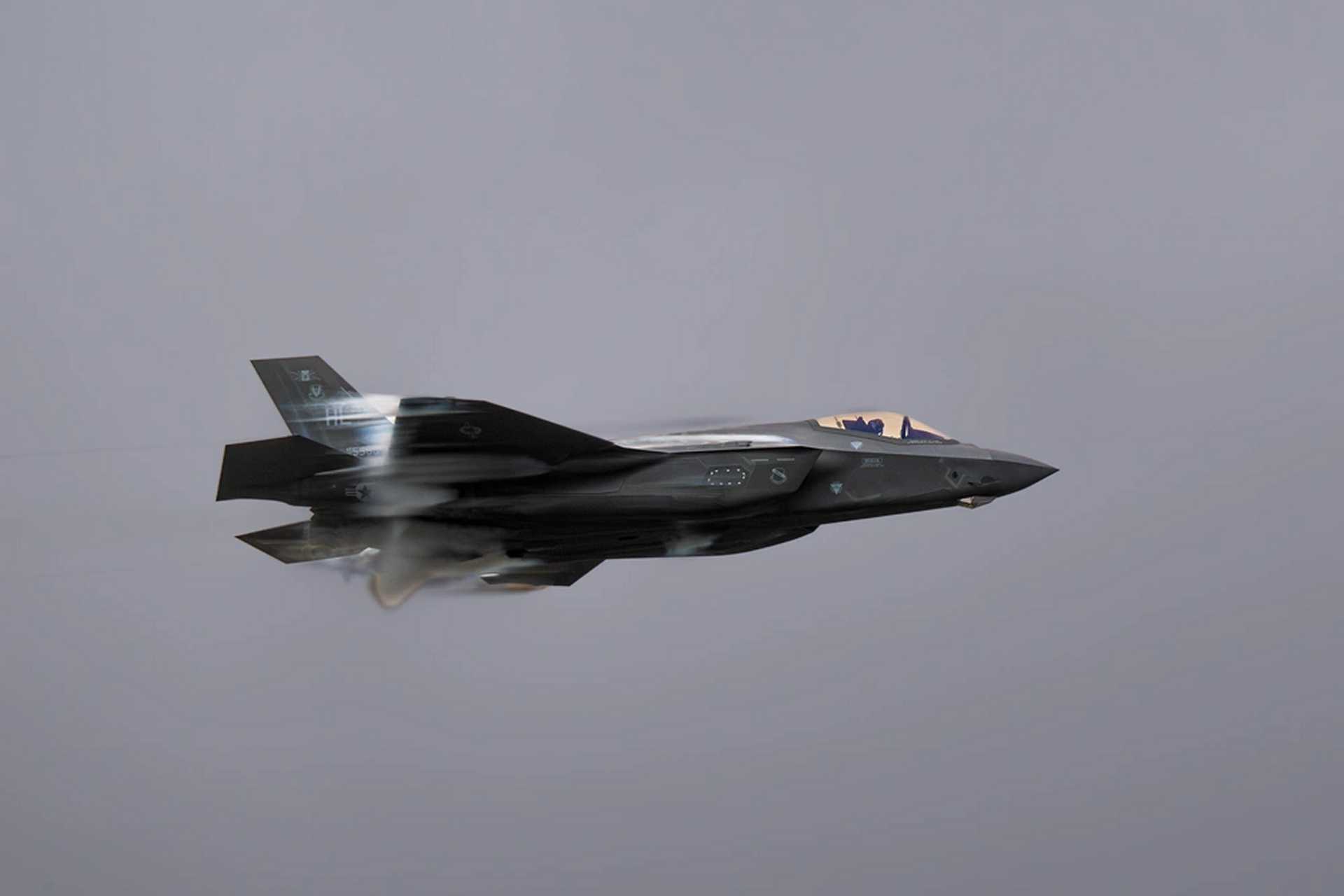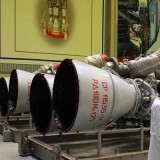US proposes the F-35 fighter jet to India despite current restrictions on Türkiye

{loadposition bannertop}
{loadposition sidebarpub}
As reported by Reuters on February 14, 2025, the United States has announced plans to increase military sales to India, with newly re-elected President Donald Trump stating that the deal could eventually include F-35 fighter jets. Indian officials clarified that no formal procurement process has begun, and the U.S. offer is still under discussion. The announcement follows India’s ongoing efforts to expand its defense procurement from multiple sources while maintaining its long-standing relationship with Russia.Follow Army Recognition on Google News at this link
The proposal is surprising given that Türkiye remains blocked from purchasing the US-made F-35 fighter jet due to its acquisition of Russia’s S-400 air defense system, which India has also procured. (Picture source: US Air Force)
Following Trump’s statement, Indian Foreign Secretary Vikram Misri confirmed that no acquisition process has been initiated. Misri emphasized that India follows a structured procurement process, requiring proposals from manufacturers and evaluations before any decision is made. Lockheed Martin, the manufacturer of the F-35, confirmed that any sale would take place at a government-to-government level, with the Pentagon acting as an intermediary. Since 2008, India has purchased over $20 billion in U.S. defense equipment, including a recent acquisition of 31 MQ-9B SeaGuardian and SkyGuardian drones after negotiations lasting over six years. The U.S. Congressional Research Service estimates that India is projected to spend more than $200 billion on military modernization over the next decade.
The proposal is surprising given that Türkiye remains blocked from purchasing the F-35 due to its acquisition of Russia’s S-400 air defense system, which India has also procured. Türkiye was removed from the F-35 program in 2019 after purchasing the S-400, as the U.S. raised concerns that the system could expose sensitive technological data on the aircraft’s stealth capabilities. Despite India also acquiring the S-400, the U.S. has not imposed similar restrictions on New Delhi, likely due to broader geopolitical considerations. Additionally, Russia has recently proposed manufacturing the Sukhoi Su-57 stealth fighter in India in the hope of reinforcing its longstanding defense ties with New Delhi.
Under President Trump’s renewed administration, the United States is focusing on recalibrating its relationship with India, which is viewed as a key strategic partner to counter China’s military presence in the Indo-Pacific. Recent discussions between President Trump and Prime Minister Narendra Modi have led to an agreement to initiate trade negotiations aimed at resolving tariff disputes and doubling bilateral trade to $500 billion by 2030. The U.S. has expressed concerns over India’s high tariffs on American goods, with President Trump emphasizing the need for “fairness and reciprocity” in trade practices. In response, India has shown willingness to reduce certain tariffs and increase imports of U.S. products, including oil, gas, and military equipment. Additionally, both nations are exploring avenues to strengthen defense cooperation and reinforce their commitment to the Quad alliance to counterbalance China’s influence. Despite these collaborative efforts, challenges will likely persist, particularly regarding trade deficits, the Make-In-India defense program, and immigration policies, as the U.S. continues to advocate for balanced trade and the repatriation of undocumented Indian nationals.
As of February 2025, the Indian Air Force (IAF) operates a fleet of combat aircraft from multiple origins, including France, India, Russia, and the former Soviet Union. The multirole fighter fleet includes 36 Dassault Rafales, 31 HAL Tejas Mk.1s, and 259 Sukhoi Su-30MKIs, with 12 additional Su-30MKIs on order. The IAF also fields 52 Mikoyan MiG-29s, including 12 MiG-29UPGs, and 47 Dassault Mirage 2000s. The SEPECAT Jaguar fleet consists of 115 aircraft, including variants used for training and maritime strike. The Mikoyan-Gurevich MiG-21 Bison fleet, currently at 40 units, is being phased out. To modernize its fleet, the IAF has ordered 73 HAL Tejas Mk.1A aircraft, with an additional 97 approved for future acquisition. The IAF’s combat aircraft strength stands at 31 squadrons, below the sanctioned 42 squadrons, reaching its lowest level since 1965 due to the retirement of older aircraft without immediate replacements.
Therefore, it is not surprising that India has had previous discussions regarding the F-35. In 2010, Lockheed Martin provided a briefing on the aircraft to the Indian Navy. In 2018, reports indicated that the Indian Air Force had shown interest in procuring 126 F-35A variants and requested a classified briefing. However, the Indian Air Force Chief of Staff at the time denied any formal request had been made. Although discussions have taken place, India has not formally begun the process of acquiring the F-35, and its current focus remains on upgrading its domestic fighter fleet. The U.S. Congressional Research Service estimates that India is expected to spend over $200 billion in the next decade on military modernization, further shaping potential discussions around the F-35.
Additionally, as reported by Army Recognition on January 6, 2025, the United States recently approved India’s participation in the co-production of Stryker armored fighting vehicles, making it the first foreign country authorized to manufacture this armored vehicle. The agreement follows months of negotiations, with India considering the acquisition of 530 Stryker vehicles for ten mechanized infantry battalions. This initiative is part of the broader U.S.-India defense collaboration under the Initiative on Critical and Emerging Technologies (iCET), which focuses on joint development, supply chain diversification, and regional security in the Indo-Pacific. The proposed rollout involves an initial off-the-shelf purchase through the U.S. Foreign Military Sales framework, followed by co-production in India and potential development of new variants, including the Maneuver Short-Range Air Defense (M-SHORAD) system.

{loadposition bannertop}
{loadposition sidebarpub}
As reported by Reuters on February 14, 2025, the United States has announced plans to increase military sales to India, with newly re-elected President Donald Trump stating that the deal could eventually include F-35 fighter jets. Indian officials clarified that no formal procurement process has begun, and the U.S. offer is still under discussion. The announcement follows India’s ongoing efforts to expand its defense procurement from multiple sources while maintaining its long-standing relationship with Russia.
Follow Army Recognition on Google News at this link
The proposal is surprising given that Türkiye remains blocked from purchasing the US-made F-35 fighter jet due to its acquisition of Russia’s S-400 air defense system, which India has also procured. (Picture source: US Air Force)
Following Trump’s statement, Indian Foreign Secretary Vikram Misri confirmed that no acquisition process has been initiated. Misri emphasized that India follows a structured procurement process, requiring proposals from manufacturers and evaluations before any decision is made. Lockheed Martin, the manufacturer of the F-35, confirmed that any sale would take place at a government-to-government level, with the Pentagon acting as an intermediary. Since 2008, India has purchased over $20 billion in U.S. defense equipment, including a recent acquisition of 31 MQ-9B SeaGuardian and SkyGuardian drones after negotiations lasting over six years. The U.S. Congressional Research Service estimates that India is projected to spend more than $200 billion on military modernization over the next decade.
The proposal is surprising given that Türkiye remains blocked from purchasing the F-35 due to its acquisition of Russia’s S-400 air defense system, which India has also procured. Türkiye was removed from the F-35 program in 2019 after purchasing the S-400, as the U.S. raised concerns that the system could expose sensitive technological data on the aircraft’s stealth capabilities. Despite India also acquiring the S-400, the U.S. has not imposed similar restrictions on New Delhi, likely due to broader geopolitical considerations. Additionally, Russia has recently proposed manufacturing the Sukhoi Su-57 stealth fighter in India in the hope of reinforcing its longstanding defense ties with New Delhi.
Under President Trump’s renewed administration, the United States is focusing on recalibrating its relationship with India, which is viewed as a key strategic partner to counter China’s military presence in the Indo-Pacific. Recent discussions between President Trump and Prime Minister Narendra Modi have led to an agreement to initiate trade negotiations aimed at resolving tariff disputes and doubling bilateral trade to $500 billion by 2030. The U.S. has expressed concerns over India’s high tariffs on American goods, with President Trump emphasizing the need for “fairness and reciprocity” in trade practices. In response, India has shown willingness to reduce certain tariffs and increase imports of U.S. products, including oil, gas, and military equipment. Additionally, both nations are exploring avenues to strengthen defense cooperation and reinforce their commitment to the Quad alliance to counterbalance China’s influence. Despite these collaborative efforts, challenges will likely persist, particularly regarding trade deficits, the Make-In-India defense program, and immigration policies, as the U.S. continues to advocate for balanced trade and the repatriation of undocumented Indian nationals.
As of February 2025, the Indian Air Force (IAF) operates a fleet of combat aircraft from multiple origins, including France, India, Russia, and the former Soviet Union. The multirole fighter fleet includes 36 Dassault Rafales, 31 HAL Tejas Mk.1s, and 259 Sukhoi Su-30MKIs, with 12 additional Su-30MKIs on order. The IAF also fields 52 Mikoyan MiG-29s, including 12 MiG-29UPGs, and 47 Dassault Mirage 2000s. The SEPECAT Jaguar fleet consists of 115 aircraft, including variants used for training and maritime strike. The Mikoyan-Gurevich MiG-21 Bison fleet, currently at 40 units, is being phased out. To modernize its fleet, the IAF has ordered 73 HAL Tejas Mk.1A aircraft, with an additional 97 approved for future acquisition. The IAF’s combat aircraft strength stands at 31 squadrons, below the sanctioned 42 squadrons, reaching its lowest level since 1965 due to the retirement of older aircraft without immediate replacements.
Therefore, it is not surprising that India has had previous discussions regarding the F-35. In 2010, Lockheed Martin provided a briefing on the aircraft to the Indian Navy. In 2018, reports indicated that the Indian Air Force had shown interest in procuring 126 F-35A variants and requested a classified briefing. However, the Indian Air Force Chief of Staff at the time denied any formal request had been made. Although discussions have taken place, India has not formally begun the process of acquiring the F-35, and its current focus remains on upgrading its domestic fighter fleet. The U.S. Congressional Research Service estimates that India is expected to spend over $200 billion in the next decade on military modernization, further shaping potential discussions around the F-35.
Additionally, as reported by Army Recognition on January 6, 2025, the United States recently approved India’s participation in the co-production of Stryker armored fighting vehicles, making it the first foreign country authorized to manufacture this armored vehicle. The agreement follows months of negotiations, with India considering the acquisition of 530 Stryker vehicles for ten mechanized infantry battalions. This initiative is part of the broader U.S.-India defense collaboration under the Initiative on Critical and Emerging Technologies (iCET), which focuses on joint development, supply chain diversification, and regional security in the Indo-Pacific. The proposed rollout involves an initial off-the-shelf purchase through the U.S. Foreign Military Sales framework, followed by co-production in India and potential development of new variants, including the Maneuver Short-Range Air Defense (M-SHORAD) system.




